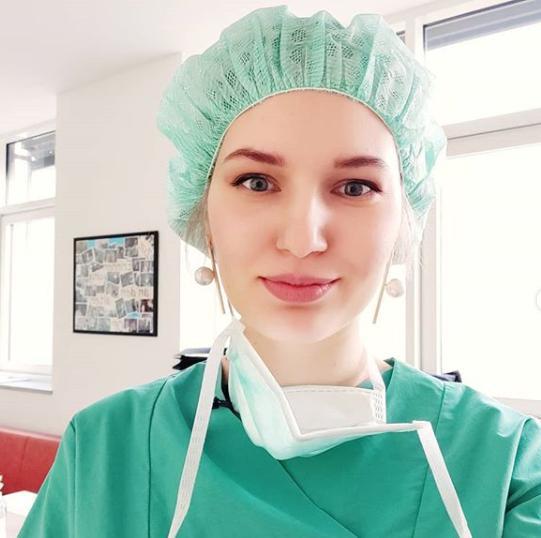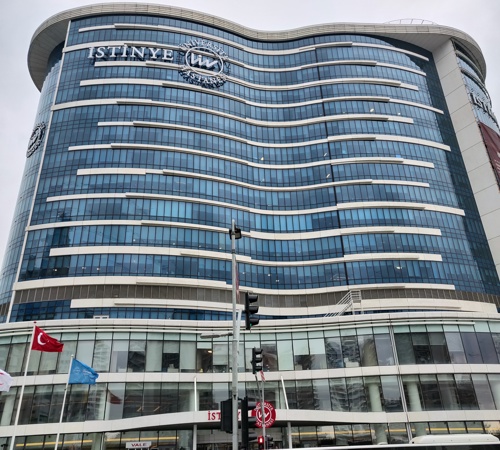Leukemia is one of the most aggressive malignant pathologies. With this disease, the tumor process affects the hematopoietic system. Laboratory methods are used to diagnose leukemias and determine their severity, among which the blood test takes the leading position.
Blood tests for leukemia and general signs of cancer in the blood
Leukemia is one of the most aggressive malignant pathologies. With this disease, the tumor process affects the hematopoietic system. Laboratory methods are used to diagnose leukemias and determine their severity, among which the blood test takes the leading position.
Complete blood count: its indicators for leukemia
For a malignant lesion of the hematopoietic system, the following changes in laboratory analysis are characteristic:
- ESR. With a malignant lesion of the hematopoietic system, ESR indicators increase. In order to be convinced of the reliability of the results, it is necessary to compare the current ESR indicators with the previous research results.
- Leukocytes. With leukemia, the level of white blood cells may be below or above the physiological norm. This indicator depends on the form of the malignant process. In the acute course of the malignant process, the level of leukocytes rises, and in the chronic form of the disease, this indicator may be below the physiological norm.
- Red blood cells. If in the results of laboratory blood tests, a decrease in erythrocyte counts to 1-2 * 109 / l is observed, then the presence of oncology in the body is confirmed.
- Platelets. At the initial stage of the development of the malignant process, the level of platelets in the peripheral blood may remain unchanged. As leukemia progresses, platelet counts decrease 10-15 times.
- Hemoglobin. A decrease in hemoglobin parameters is observed in patients with leukemia at a late stage of development. In the results of laboratory blood tests, hemoglobin indices range from 50 to 60 g / l. Before confirming the presence of oncology, differential diagnosis is carried out with iron deficiency and B12 deficiency anemia.
- Reticulocytes. At an early stage of the development of a malignant process, a decrease in reticulocyte counts may be observed, since these cells are precursors of erythrocytes.
- Eosinophils and Basophils. Leukemia is characterized by the complete absence of basophils and eosinophils in the peripheral blood.
Fingerprint test parameters for different types of cancer
In the acute form of this disease, serious changes are observed in the hematopoietic system. One of the characteristic signs of acute leukemia is a decrease in hemoglobin parameters to 30-60 g / l. Also, there is a decrease in the number of red blood cells, which in combination leads to the development of severe anemia. In many patients with acute leukemia, the platelet concentration decreases to 20-109 /l.
An important sign of an acute form of oncology of the hematopoietic system is the so-called leukemic failure, in which only blast forms of cellular elements are present in the peripheral bloodstream, and their transitional forms are completely absent. A decrease in the number of leukocytes (leukopenia) is characteristic of myeloid leukemia. Taking into account the type of oncology of the hematopoietic system, the following results of the study of capillary blood can be obtained:
- Myelomonoblastic. The study results show an increase or decrease in the level of platelets, leukopenia, moderate or normochromic anemia.
- Monoblastic. In peripheral blood, the number of platelets decreases, hemoglobin levels decrease, and the level of erythrocytes decreases.
- Megakaryoblastic. There is no change in platelet counts in the analysis results.
- Lymphoblastic. In the peripheral blood flow, large blast cellular elements predominate.
- Promyelocytic. With this form of cancer, there is an accumulation of promyelocytes in the systemic circulation, a decrease in the number of leukocytes, hemoglobin, platelets and erythrocytes.
- Erythromyelosis. The results may indicate leukopenia, the size and shape of red blood cells changes.
Biochemical analysis: its parameters in cancer
With a malignant lesion of the hematopoietic system, the results of a biochemical blood test will look like this:
- Decreased indicators of fibrinogen, glucose and albumin.
- Increased indicators of gamma globulins, LDH, bilirubin and urea.
Biochemical analysis: test for tumor markers
With the development of oncology of the hematopoietic system, the level of beta-2-microglobulin, which is of a protein nature, may increase. Also, a change in ferritin metabolism indicates the development of hematological cancer.
What affects the accuracy of the diagnosis
The reliability of laboratory test results is influenced by both external and internal factors. These factors include:
- Tobacco smoking.
- The use of food products that affect the ratio of blood corpuscles.
- The presence of an infectious and inflammatory process in the body or previous infectious diseases.
- Physical and emotional overload.
- Menses.
When blood test is normal
In the absence of pathological changes in the body, the Roseltats of a general blood test look like this:
- Hemoglobin - for women, the indicator is from 120 to 150 g / l, for men it is from 130 to 170 g / l.
- Erythrocytes - for women, the normal range is from 3.5 to 4.7 · 1012 / l, for men, the norm is from 4.0 to 5.0 · 1012 / l.
- Platelets - the normal range is from 180 to 320 109 / l.
- Leukocytes - indicators do not go beyond 4.0-9.0x109 / l
- ESR - for women, the norm is from 5 to 15 mm / h, and for men from 3 to 10 mm / h.
Violations of blood composition in leukemia
A characteristic sign of the development of leukemia is a decrease in the number of platelets. In addition, in the acute form of the disease, the amount of immature cellular elements can increase up to 95-99%. In the chronic form of the disease, the level of blast elements does not exceed 10%.
Acute leukemia: principles of diagnosis and treatment
Acute leukemia is a severe malignant lesion of the hematopoietic system, which is based on the formation and rapid division of immature cellular elements, which displace hematopoietic germs in a short period of time.
In the general principles of diagnosis of acute leukemia, there are several informative methods, among which there are:
- Hematological tests, including sternal puncture and laboratory blood tests. In the study of peripheral blood, the development of a malignant process is indicated by the presence of blast elements, a decrease in the number of platelets, anemia, leukocytosis and an increase in ESR. In a laboratory study of bone marrow fragments, the ratio of cellular elements (myelogram) is assessed. An important criterion is the ratio of erythrocyte and leukocyte cells. With the development of leukemia, this ratio changes in favor of leukocyte cells.
- Cytogenetic research. During the diagnosis, chromosomal mutations and genome abnormalities are determined. In 90% of patients with an acute form of this disease, one of the disorders at the chromosomal and gene level is determined.
- Immunological analysis using monoclonal antibodies. The essence of the technique is the processing of blood cells with monoclonal antibodies with a fluorescent label and are introduced into a blood vessel, illuminated by a laser. The study evaluates the amount of antigens expressed by the labeled cells.
General principles of treatment of acute leukemia
Therapy of the acute form of leukemia is carried out in the conditions of the oncohematological department. Such patients are prescribed courses of chemotherapy, immunotherapy and sessions of exposure to ionizing radiation. The entire treatment process consists of the following successive stages:
- The induction stage aimed at achieving a state of remission of the disease.
- The stage of consolidation, the purpose of which is to consolidate the achieved result.
- The stage of maintaining the state of remission.
These stages are implemented in accordance with the schemes of polychemotherapy, which are selected individually for each patient, taking into account the morphological characteristics of the disease. It may take 4 to 6 weeks of increased treatment to achieve remission of leukemia. Further, in order to consolidate the obtained result, at least 2-3 courses of chemotherapeutic action should be carried out. To maintain the result, the patient receives anti-relapse therapy for 3 years.
To prevent the development of disseminated intravascular coagulation, agranulocytosis, neuroleukemia and infectious complications, patients are prescribed a course of antibiotic therapy, transfusion of fresh frozen blood plasma, platelet and erythrocyte mass. A radical method of treatment and prevention of recurrence of the acute form of the disease is bone marrow transplantation. Before performing the transplant, the patient undergoes a course of radiation and chemotherapy, which allows to destroy the remnants of pathologically altered cells. Also, measures are taken to suppress immunity and prevent transplant rejection.
Patients with acute leukemia need comprehensive and constant care, including the following activities:
Hygienic treatment of the oral cavity.
Prevention of bedsores.
Hygiene of the external genital organs after each urination and bowel movement.
The nutrition of such patients should be balanced and fortified.
One can speak of complete recovery if, within 5 years after the end of complex treatment, the patient has not encountered a relapse of the disease. In the course of complex treatment, not only pathological cells, but also healthy cellular elements are exposed to the harmful effects of ionizing radiation and chemotherapy. Cells with accelerated division are the first to be hit. Chemotherapy and radiation therapy damage the cells of the intestinal epithelium, oral mucosa, and hair follicles.
In addition, chemotherapy sessions lead to nausea and vomiting, temporary alopecia, and suppression of appetite. To combat nausea and vomiting, antiemetic medications are prescribed in combination with chemotherapy.
Treatment of complications
A decrease in the number of erythrocytes and platelets in the peripheral blood leads to the development of such complications of acute leukemia as bleeding and severe anemia. In addition, the body of such patients becomes susceptible to the development of infectious diseases. For the treatment of infectious complications, empiric antibiotic therapy is used, including the administration of 3rd and 4th generation cephalosporins.
To combat bleeding, thromocyte transfusion is performed. Treatment for severe anemia is red blood cell transfusion. Another common complication is tumor disintegration (lysis) syndrome. Treatment includes taking antiarrhythmic drugs, setting cleansing enemas (for chronic constipation), correcting the water-salt balance using drip injection of physiological solutions. If necessary, anti-inflammatory and analgesic agents may be prescribed. In severe cases of tumor disintegration syndrome, hemodialysis is performed.
Forecast
Modern chemotherapy drugs make it possible to achieve stable remission in 65-80% of patients with a similar diagnosis. Of this number, at least 20% of patients achieve complete recovery. Predictions regarding survival and recovery are most favorable in acute lymphoblastic leukemia. A less favorable prognosis concerns myeloid leukemia.
Still have questions? You can call us or leave a request on our website and experienced coordinating doctors will answer all your questions about the best specialists, clinics and treatment prices!







